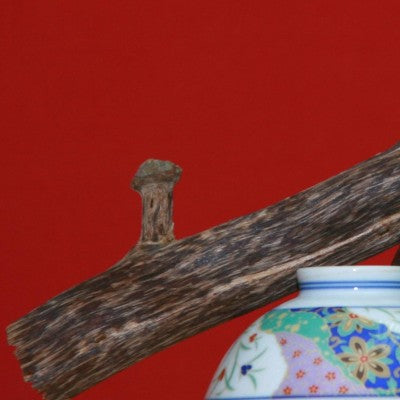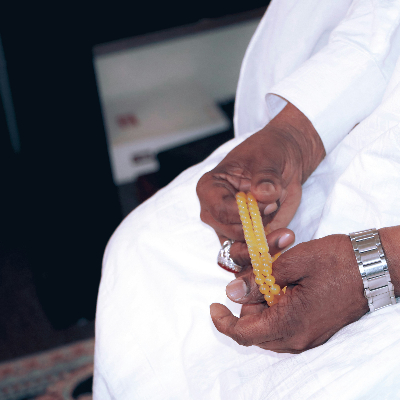Menu
-
-
F.A.Q
- How to identify genuine agarwood chip, natural or cultivated
- How to identify oil injection / absorption fake agarwood beads
- How to know if there are more than one oil in your oil
- How to make your wood bracelet or mala darker
- How to tell if an Agarwood bead sinks WITHOUT sinking it under water?
- How does back flow incense work and how do you burn it?
- Where to start if you don't know what agarwood is ?
- Why are you losing money if you buy seeds and plants?
- Which agarwood incense should I choose?
- Frequently Asked Questions
- Agarwood Related Articles
- Shipping
-
SHOP - Agarwood
-
SHOP - Other Fragrant Wood
-
SHOP - Incense Holder and Burner
-
- FREE Oud Oil guide
- Testimonials
- "Why did you buy this?"
- Contact us
- About Us
- +61430284329
- Login
-
English


A detailed view of Agarwood usage
October 26, 2021 14 min read
Table of Contents:[hide]
If you have never heard of Agarwood before, this quick Free ebook will give you a good overview of it. However, if you want to stay on, you will find more information on Agarwood usage in people lives. This blog will dive deeper into its background and application.
What is Agarwood?
Imagine this: you go to the gym, train your biceps or quadriceps. The training stimulates your muscles. After several months, assuming you are training with the correct techniques and having proper nutrition, your biceps and quadriceps would get harder. Your muscles would be denser and stronger.
Agarwood is similar to your muscle growth, it only develops when there are stimulants. Here is what happens
The tree that provides agarwood is Aquilaria. When there is no stimulant, there is no agarwood.

Looking at the image above, you probably wonder why there is a hole in the tree?

The hole is the result of drilling - a form of stimulant.
What are stimulants?
There are several stimulants and these stimulants have one thing in common: to wound the tree. Once wounded, the tree develops its “muscle” - agarwood- to heal the wound and fight the disease to recover.
-Thunder strikes
-Severe weather: storms cause broken branches
-Herbivores: these animals take a bite at the branch
-Pest: termites, boring insects may attack the tree and build their nests inside the tree
-Fungal infestation: While some fungi are beneficial to the trees, some of them act as parasites. They suck nutrition from the tree making the tree sick.
The response to these attack - “stimulants”, the tree develop agarwood to fight against them and thrive.

As wild harvesting Agarwood is not sustainable, science and technology allow human to develop our own stimulants for the planted Aquilaria tree. Here is a short video of the farmer want to wound their trees.
Now that you just have learnt an overview what Agarwood is. Next we are going to look into its usage.
In the Aquila tree, we will look into 2 parts: the leaves and the woody parts (branches, trunk, and root), which have their own uses.
The use of the leaves and woody parts of the Aquilaria trees
Tree Part: Leaves
When a farmer plants Aquilaria trees, he knows that it would take a minimum of 12 years to harvest. During these 10 years, there would be no benefit to the farmer but our environment (at least these saplings photosynthesis and provide oxygen to the earth).

Fortunately, Aquilaria leaves could be brewed as a herbal infusion, known as agarwood tea. This tea is an excellent drink with health beneficial (click here for research paper).

It is a beneficial drink for diabetes, gout, light constipation (Zuhanis 2016 et al)
Although the benefit is excellent, the bitter taste of herbal infusion of Aquilaria leaves (Agarwood tea) may be unpleasant to some people. When infused in hot water, the drink has an astringent taste.
If you have not tried Agarwood tea before, start with 4 leaves like the image below

Source: Grandawood Agarwood - taken by Ba Kiet Vuong
If you feel it too weak, you could add more leaves. I have tried 5g of the leaves at one go and I found that very bitter.

Source: self-taken 5g of Aquilaria leaves
Some people do love this taste and have been drinking this tea daily. If you like bitterness, you will enjoy this herbal infusion drink - agarwood tea.
However, when you feel the taste is too astringent, you could brew it with Pu-er tea at a ratio of 2g of Pu-er at 1g of Aquilaria leaves. I have tried that, and I found Puer significantly reduced the astringency taste of the Aquilaria leaves.

Tree Parts: Branches, Trunk, Root
In the first 10 years, the Aquilaria trees need to stay healthy. They need to be strong enough before receiving external attacks.
Many experienced agarwood farmers expressed that if they wound trees are less than 10 years old, the probability of trees dying immature is high.
Aquilaria trees are non-timber trees. If you pick up a healthy log, you will notice this log is very light. You could not use Aquilaria wood as a structural building material. It means when the trees die immaturely, they are as good as firewood.
If the Aquilaria trees could survive for 10 years, agarwood farmers will wound the Aquila trees to create agarwood. This process will take around 2 years.
After two years, the farmers could harvest the trees. Trees that are not harvested will continue to live on, continue to receive attacks from the growers.
Farmers will need to hire more local workers to get Agarwood from the tree when the trees are harvested.
After several days, you will see something like the below, and this is called Agarwood chip.

Source: Image by Ba Kiet Vuong Evergreen Forest
Agarwood chips
If you bring a piece of Agarwood chip to your nose and smell it, you may feel a subtle aroma from it at room temperature.
However, if you heat it under charcoal or an electric burner, you will experience a pleasant woody aroma. This aroma is what people are seeking.
You have just learnt the overall process of harvesting Agarwood. Wait until you actually experience the aroma of heating wood chip; you will understand why many people love it.
While its aroma is pleasant, a piece of the wood chip would last around 3 to 5 minutes. To some people, this is relatively short. They want this aroma lingering in the air a bit longer. This is when a skilled incense crafter comes in: to extend the enjoyment time without adding more precious raw Agarwood.
An Agarwood distiller will need to scrape out as much whitewood as possible to distil oil Agarwood commercially. However, there will be some whitewood remains regardless.

Whitewood Scrapping
Source: self-taken
Once the whitewood are mostly removed, the distiller will have all these Agarwood ground into powder.

Ok, so who want to use this Agarwood powder anyway?
- The Traditional CM practitioner to make medicine (you will learn it in a few paragraphs)
- The Agarwood oil distiller: to distil oil
- The Incense crafter: to craft incense with Agarwood is the main or one of the ingredient.
Agarwood incense
First, the incense crafter will pulverise Agarwood chips into powder. He will use this powder to make Agarwood incense. He will also blend this Agarwood powder with other herbs to create a unique Agarwood incense aroma.

A well-made Agarwood incense will last more than 10 minutes depending on its length. Generally, the aroma has minimum burnt notes which you may experience in heating Agarwood chip. After finished burning of an incense, the Agarwood aroma is still lingering around the air, and it could last for an hour or two.
Agarwood Oils
This powder will be submerged into water before adding to the distillation chamber to distil. The duration ranges from several days to several weeks or even months.

Agarwood oil in distilling process
Source: self-taken
Now you have learnt a good overview of what agarwood is, you may wonder what people use agarwood for?
Use of Agarwood: How do people use Agarwood in their daily lives?
In Asia, many countries have the ideal climate for the Aquilaria trees to thrive: Bangladesh, Brunei, Cambodia, China, India, Indonesia, Laos, Malaysia, Myanmar, Nepal, Philippines, Singapore, Timor-Leste, Thailand and Vietnam. Among these countries, there are studies and researches on how people use Agarwood. I would like to show you briefly. Here are the lists:
Religion
There are some group studies in many religions and some teaching from the local religious leaders. Occasionally, I have served some Buddhists with Agarwood incenses in their Dhamar talks. In Taoism, Taoists burn Agarwood chips for self-purification. They believe the aroma has cleansing power.
In some Mosques (masjid), Muslims burn Agarwood chips for the fragrance because people believe Agarwood is the scent that Allah loves.
Cultures
In Japan, The Kodo is a Japanese incense ceremony that has been created around the 14th or 15th Century C.E. The main incense ingredient for appreciation and discussion is Agarwood.
In the United Arab Emirates, “Burning agarwood chips in an open brazier is considered an essential customary practice to honour the visit of guests, interwoven into UAE nationals’ lives. In summary, oudh is seen as a part of the heritage as well as the modern national identity of the UAE.” (M ANTONOPOULOU · 2010 )
In China, Malaysia, Taiwan, Thailand and Vietnam, people burn Agarwood incense during traditional festivals and ceremonies to attract blessing and good luck.
Spiritual/ ritual purposes
Many people wear Agarwood bracelets or Agarwood malas. Some people also have Agarwood figurines, either small or large, in homes and offices to attract luck, to bring positive energy. But why? Have you wondered where this belief comes from?
One main reason people believe Agarwood could bring positive energy to their body and living places
I often heard “somebody told me that” but I feel this explanation is somewhat insufficient. So I found a credible source: The Chinese Pharmacopoeia, which is recognised by the World Health Organization (page 10) as the official pharmacopoeia of China. If you study Traditional Chinese Medicine, this book is an excellent reference and super beneficial to have.
Property and Flavor: Gentle warmth with a combination of pungency and bitterness. Meridian tropism: Affects the Spleen, Stomach, and Kidney meridians.
Actions: Facilitates the movement of qi, alleviates pain, warms the middle energizer, prevents vomiting, enhances qi absorption, and relieves wheezing. Indications: Alleviates sensations of bloating, tightness, and discomfort in the chest and abdomen. Effective for treating vomiting and hiccups caused by stomach cold. Useful for addressing wheezing due to the reverse flow of qi and kidney weakness.
Properties of Agarwood in Traditional Chinese Medicine -Source Chinese Pharmacopoeia
You see, some of the Agarwood Actions are to move and absorb Qi. And Qi is an energy, a life force of a person (Click here for a comprehensive definition of Qi), and also the energy around you that you could not see from the naked eyes. Agarwood could regulate Qi, absorbing the negative and attracting the positive energy, bringing fortune and wealth.
Because of this belief, people place Agarwood decors, figurines, and statues in their houses and workplaces. They also wear Agarwood bracelets and malas to bring this positive energy to their bodies.
In some rituals, Agarwood chips or incense are used for smudging the places in Grand Opening ceremonies, Weddings, or buy a new house.
In Malaysia, some tribes fumigate paddy fields with agarwood smoke to appease spirits, asking them to bless them and protect the corps.
Although Aquilaria is non-timber wood, sculpture artists could carve statues and artistic shapes for spiritual purposes. For example, the Agarwood sculpture of Bodhisattvas, Buddhas and Jesus or even in abstract landscape forms.

Display of Wild Agarwood décor and Agarwood chips
Source: Ba Kiet Vuong- Evergreen Forest
Aromatherapy
Agarwood is known for its aroma. Many botanical perfumers appreciate the complexity aroma that it adds to their perfume.
Agarwood (Oud) oil has anxiolytic and sedative properties. It means oud oil could be beneficial for alleviating nervous tension, anxiety and restlessness.
If a person feel stressed, he could diffuse Oud oil in a ultrasonic diffuser and mediate. Or simply take a dab of oil on the wrist, behind the earlobes or on the neck.
Once a person feel relaxed and worry-free, he will be happy. It sounds great, doesn't it?
You may find that many blogs and articles saying how wonderful Agarwood smell is. If it is true, then you may wonder you may also find some people are not so keen about this "heaven" smell. Some even said the smell is so offensive.
Here is one way to explain it: each person perceive each smell differently.
If a person dislike the scent, it may cause headache or discomfort to that person.
There are different Aquilaria species growing in different region. In relation to the scent profile, it is complicated. For example, even coming from the same tree, the oil extracted from the branch will smell slightly different from the trunk, and the root.
To make it more interesting, here are more reasons why Agarwood smells differently
- Different species will produce different smell.
- Same species, if they grow in different region, they will develop different smell
- Same species, same region, if they are distilled by different distillers, they will develop different smell
- Same species, same region, different time of harvest will have different aromas
- Same species, different pre-treatment of Agarwood (submerging in water, time of fermentation, water quality) will produce different Agarwood aroma.
- Same species, same region, same distillers but different cook wares (distilling apparatus: coper vs stainless steel, or alloy)
- Same species, same region, same distillers, but different distilling method: water-distilled, steam-distilled, Co2 extract, will provide different smell
- Even the same oil from the same batch, but ages differently (i.e 3 months vs 12 months), the aroma will be different, the longer the better.
So when I hear a person said "I hate Oud smell, I guess it is not for me", I know that they are likely only try one or three different oils.
(Please note: Agarwood chips smell different too for the above reason. However, it will have more "like" than "dislike" because most chips do not usually have fermented smell like some oils do).
However, if that person has the financial mean, and the opportunities to try more, I believe one day, that person will find many oud oil that he loves.
Just in case you are interested, we have some Agarwood sample here
Alright, next we will explore its health benefit in medicine.
The role of Agarwood in Pharmaceutical/ folk medicine
Please note the below information is for your reference and educational purposes only. They are not intended to diagnose, treat and cure a particular disease.

Source: Ba Kiet Vuong - Evergreen Forest
For many decades, people have been using Agarwood in folk medicine because of its health benefit. And the Agarwood people using were from the wild. As the demand of Agarwood rises, its number in the wild reduces significantly. There is not enough supply in the wild to meet the demand.
When horticulture developed, people learnt how to harvest Agarwood in an Agarwood plantation. There are many ways to create Agarwood. One of these methods is to use chemicals that could be safe. Most Agarwood creation methods are trade secrets, so knowing if the chemicals are safe is challenging. To make medicine, it is best to use Agarwood that is created physically, mechanically, or biologically.
In Sarawak (Malaysia) and Brunei, there is a nomadic group of indigenous people known as Penan people living in the forest. Some of them are Agarwood hunters.
These people rely on herbs to treat disease and illness as hospitals, and health care facilities are not immediately available. “Locally and among other Kenyah groups, gaharu (Agarwood) may be ingested as a remedy for various stomach ailments” (Chin 1985). They also use Agarwood to treat fevers and repel insects.
You may wonder about the efficiency of Agarwood medicine. Does it really work?
Don't worry, you soon find out at the below.
I did some more research and found a summary of Ethnopharmacology of the Aquilara (Agarwood) in different countries.
Some tribes use Agarwood mixed with coconut oil as a balm for arthritis, backache, and sprains in Malaysia.
They also make an Agarwood concoction
- to treat rheumatism and other body pains, promote the flow of qi,
- relieve pain as well as asthma,
- and arrest vomiting by warming the stomach.
It sounds impressive, but there is no recipe for this concoction.
Wouldn’t it be nice to have a recipe handy?
Thanks to a friend who lent me his book “The Foundations of Chinese Medicine 3rd Edition”.
Aquilaria is also known as Aquilariae Lignum Resinatum
Inside this book, page 660, I found the below decoction to treat bloating (stomach pain, Epigastric distention)
Page 1215, Gun Tan Wan, drive out Phlegm
Grind all herbs into an even powder and use water to form into pills.
Dr. Penner, who sadly passed away in Jan 2020, also mentioned Gun Tan Wan on his site. Although the weights of individual ingredients are different, the ratio of herb mixing is similar.
You see, the Malaysian indigenous people use Agarwood to treat stomach pain. The TCM also uses Agarwood to treat stomach pain. And Agarwood is not just used to treat stomach pain, but there are more.
In the Chinese Pharmacopoeia, there are many medicines with Agarwood as an ingredient. Among them, there is one popular herbal medicine that is patented and available commercially in pill forms. The formula is to relieve pain in the hypochondriac region. The hypochondriac region, also known as the hypochondrium, refers to the upper part of the abdomen located on both sides of the epigastric region. It is positioned beneath the lower ribs and extends from the costal cartilages to the subcostal margin. The hypochondriac region is divided into two sections: the right hypochondriac region, which is located on the right side of the body, and the left hypochondriac region, situated on the left side. This region contains various organs, including parts of the liver, gallbladder, stomach, spleen, and small intestine, among others (Gastroenterology Associates )
As mentioned, you can find more information about Ever Spring Shu Gan Wan (舒肝丸 - liver cleansing pill) here.
According to Dragon Acupuncture and Heb Center Inc, “Shu Gan Wan disperses the stagnated liver Qi for regulating the stomach, regulates Qi to relieve pain. It is used for the stagnation of Qi due to depression of the liver, fullness and distention in the chest and hypochondrium, stomach ache, gastric upset and vomiting, eructation and acid regurgitation. The Chinese medicine will help digestion, removing food stagnancy and keeping fit.”
The Mongolians also have their formula using Agarwood to "clear heart and liver fire, regulate qi, and tranquilize the mind with heavy settling medicinal"

Source: Chinese Pharmacopoeia
In Japan, a company has Agarwood in its Cardiac Stimulant Drug, known as Rokusingan. It is beneficial for palpitation, shortness of breath, and restoration.

Source Karcie
In the book Indian Herbal Remedies (CP Khare, 2004), the author mentioned that Agarwood powder when mixed with honey could relieve cough.
In addition, when mixed with Angelica Archagnelica, the paste could be used for “external application in oedema”.

Angelica Archagnelica
Source: Pixabay
According to the author (CP Khare 2004), The incense of Aguru (Agarwood) provides relief in hiccough and asthma. I do not know about the hiccough part but I agree with the asthma relief benefit although it may no be true to everyone.
I maybe biased because our families grow Aquilaria trees and make Agarwood incenses. Although it sounds like self promotion, the one thing that we are 100% confident is there are no other ingredients in our Agarwood incense except for the plant-based binding. Here is my story
My mom has asthma, and she has been burning Agarwood incense without issues. In Vietnam, burning incense in the altar as a tribute to remember a passed away member and that is what my Mom did for her Mom (my grandmother).
At one time, she ran out of her Agarwood incense so she went to a local market and get a pack of incense from the local. She starts coughing after 10 minutes of use. Maybe there is nothing wrong with the incense because there are many people who are using this brand. But it triggers her asthma so she coughs. She calls my brother to bring more Agarwood incense home to use from our factory, she no longer coughs.
In the book Duke's Handbook of Medicinal Plants of the Bible (Dr James A. Duke 2017), he mentioned Asian Indians make a medicinal paste containing Agarwood and Isvari in brandy. They use this paste in the chest to treat bronchitis. They also use the same paste on the head to treat headache .
Conclusion
Agarwood is known for is aroma . From Agarwood chips, Agarwood farmers could make incense, distil oils, crafting Agarwood beads and decors. Consumers use these Agarwood products to wear them in their body or use them in their homes and offices for their spiritual purposes as well as attracting health benefit and fortune. In addition, Agarwood also plays a role in folk medicine such as the TCM and Ayurveda (a natural system of medicine, originated in India more than 3,000 years ago). I hope through this article, you will learn more about its additional benefits, especially in the pharmaceutical sector.
Just in case you want to read more
Overview of Medicinal Properties and Toxicities of Agarwood Species
Agarwood Leaf Essential Oil Characterization and Effects on MCF-7 Breast Cancer Cells
Antidiabetic activities of Malaysian agarwood (Aquilaria spp.) leaves extract
Leave a comment
Comments will be approved before showing up.
Also in News

What is Tasbih? The Deep Meaning of Subhan Allah and the Role of Prayer Beads
November 09, 2025 4 min read

